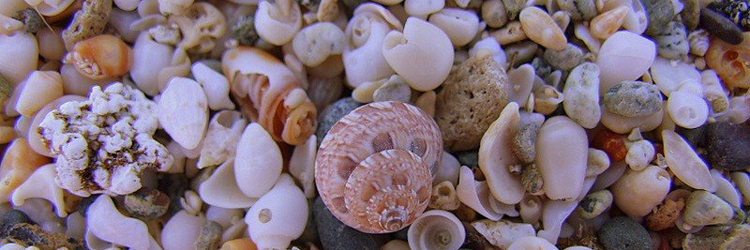In the waters around Chrissi, the variety and populations of marine species keep growing because the waters are very shallow. Most animal species on the island are spread across the Mediterranean and none of them is dangerous to humans. The loggerhead sea turtle Caretta-Caretta has been seen many times on the island, but no egg-laying has been reported there. Finally, there are more than 120 recorded bird species, most of them migratory, which stop on the island to rest before they continue their journey.
Chrissi has beautiful beaches with emerald waters, shallow bays and sandy beaches with countless shells, rich flora and fauna, fine golden sand and beautiful colours reflected in the sea. Thanks to this beautiful and preserved ecosystem, Chrissi has been included in the European network of protected areas (NATURA 2000).
ROCKS & FOSSILS
The main rocks of Chrissi were created when an underwater volcano erupted millions of years ago and its lava solidified. If you take a walk on the island, you will be impressed by the colours of the stones that are mainly grayish-green, auburn and black. However, the largest part of the island is covered by fine golden sand.
The 49 types of fossils (corals, sea shells, barnacles, urchins) that have been found on the island are of marine origin. They were imprinted on the volcanic stones 350,000-70,000 years ago, when Chrissi was still submerged under the sea. The northern side is full of shells (Belegrina, Chatzivolakas, Kataprosopo), but on the eastern side of the northern beach in particular there are so many of them that they constitute one of the island’s main characteristics.
